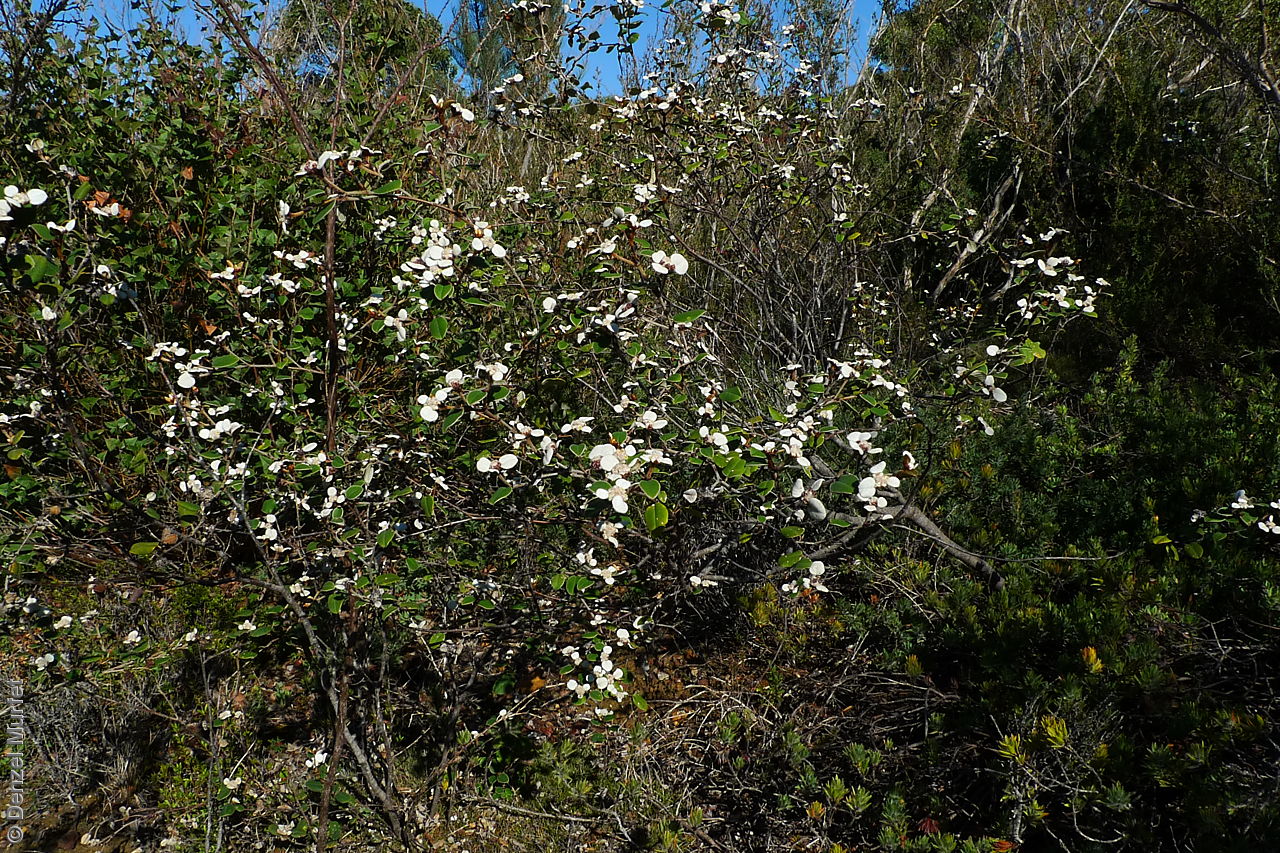
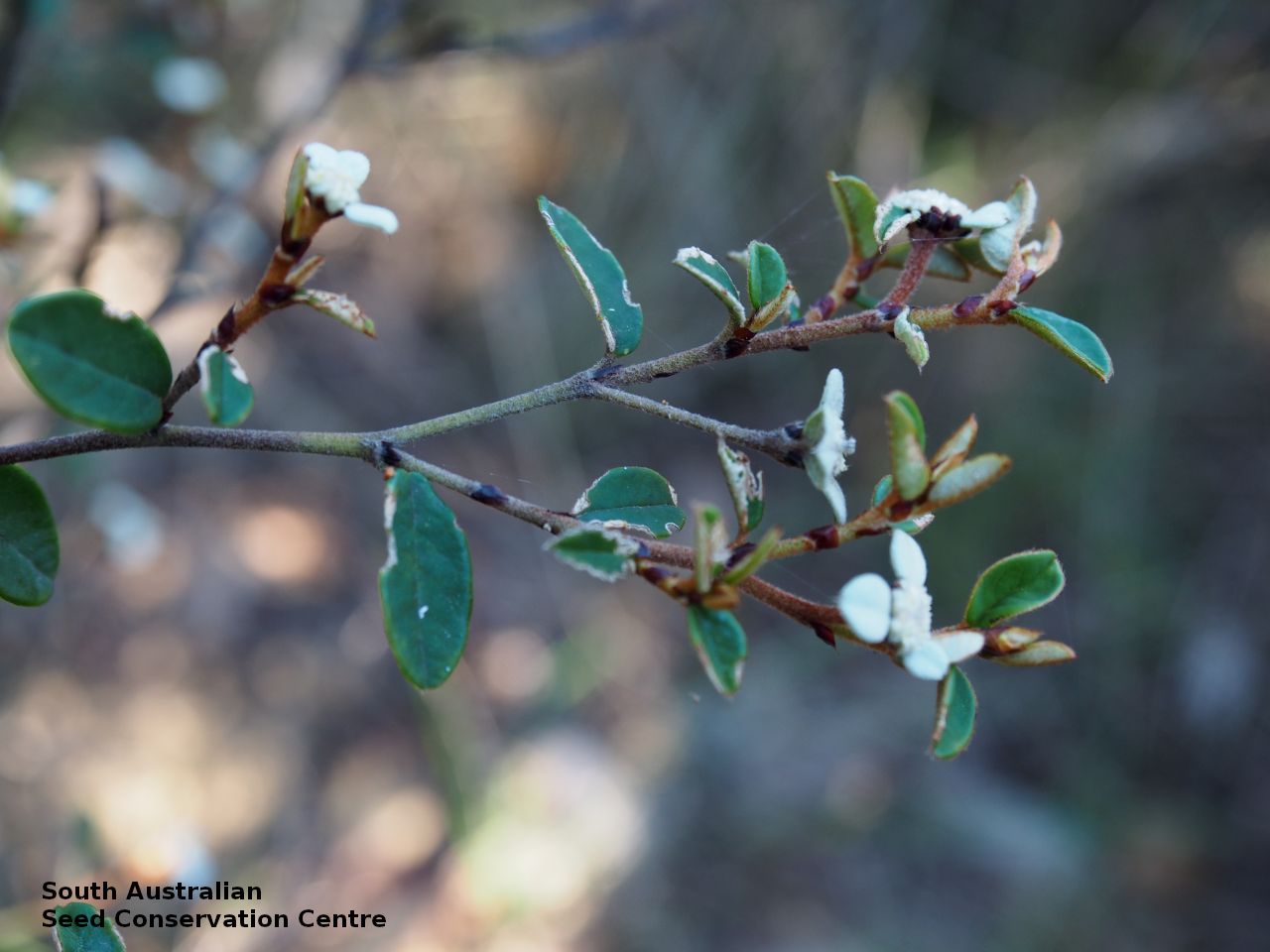
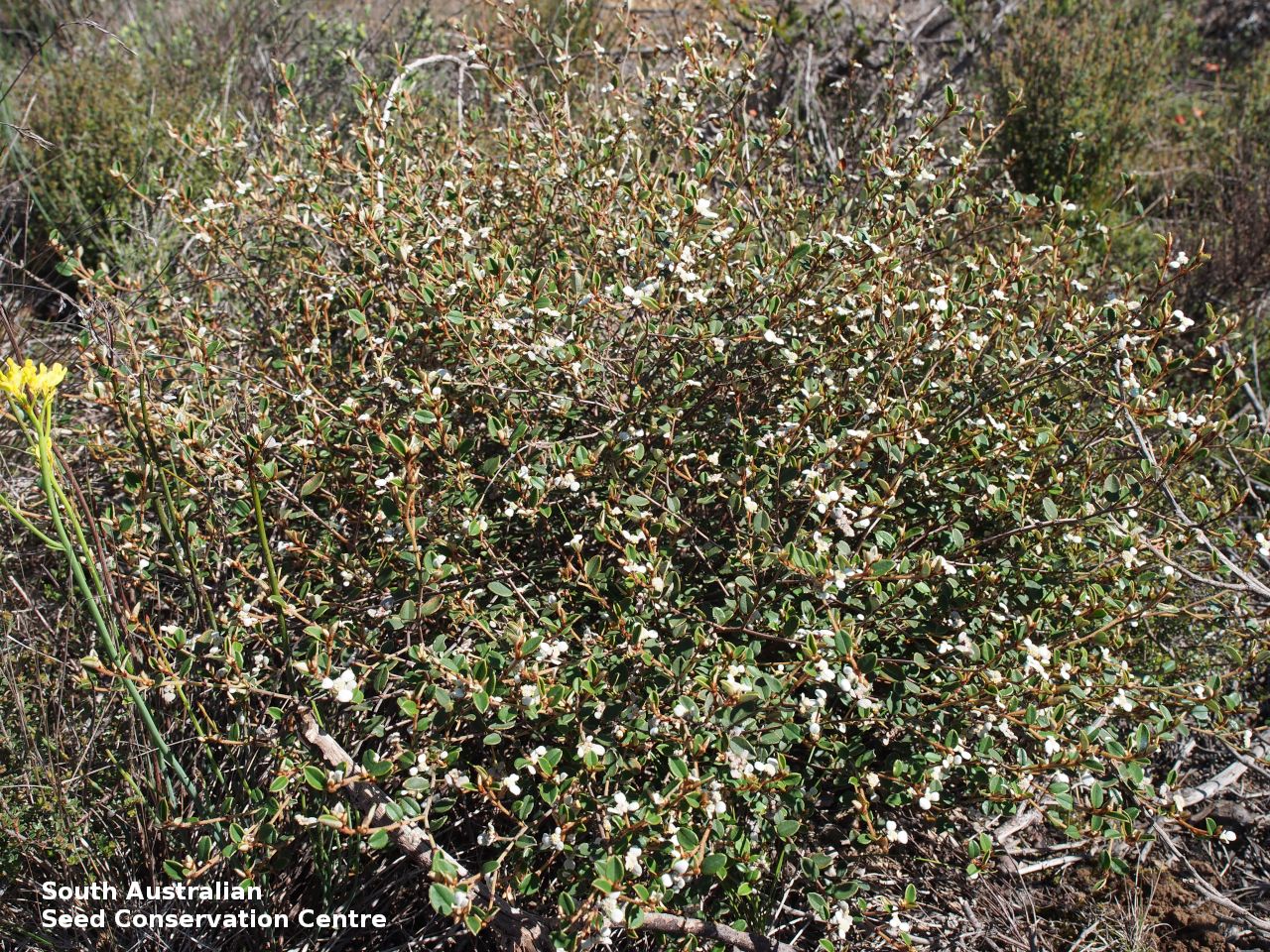
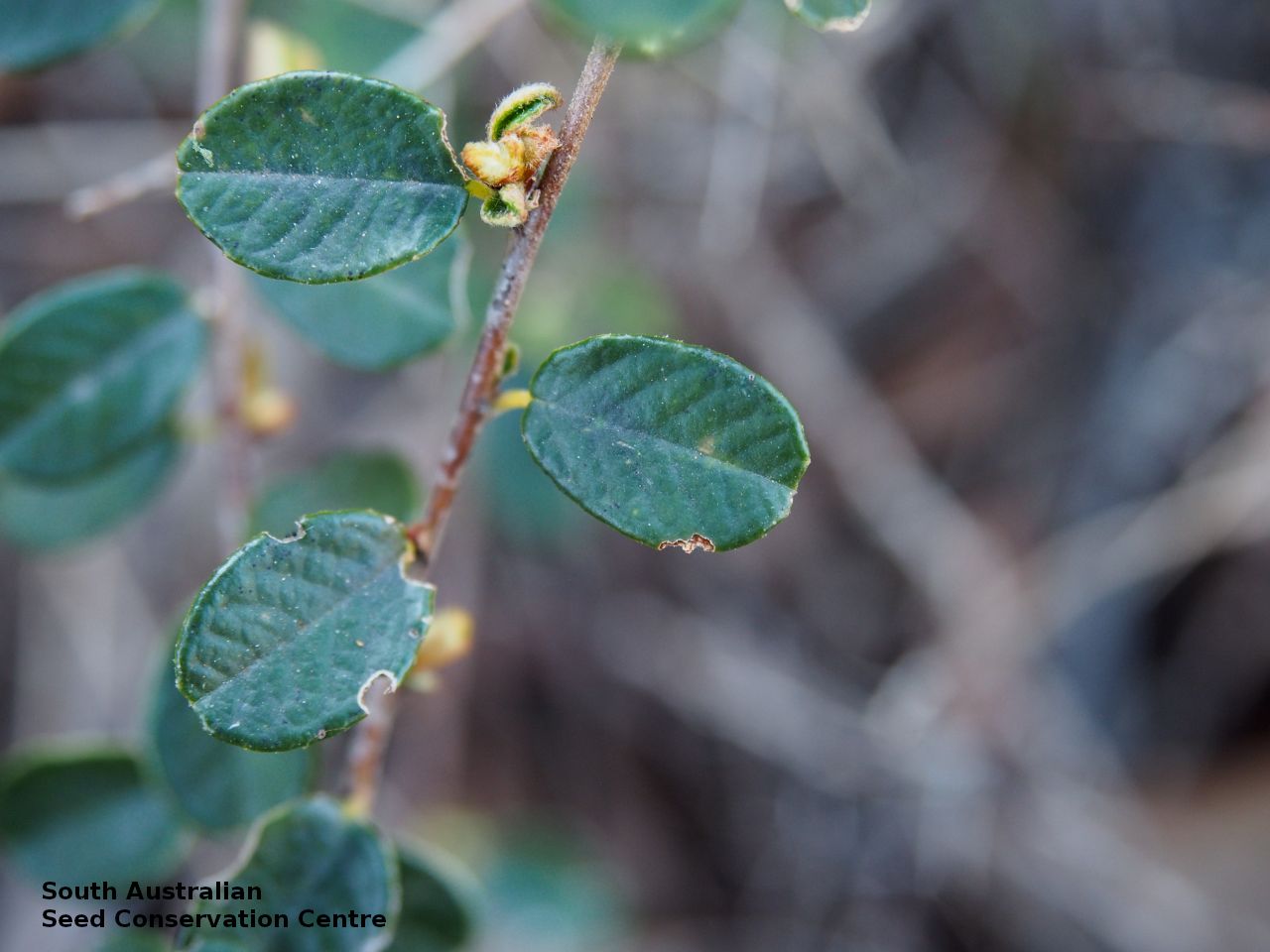
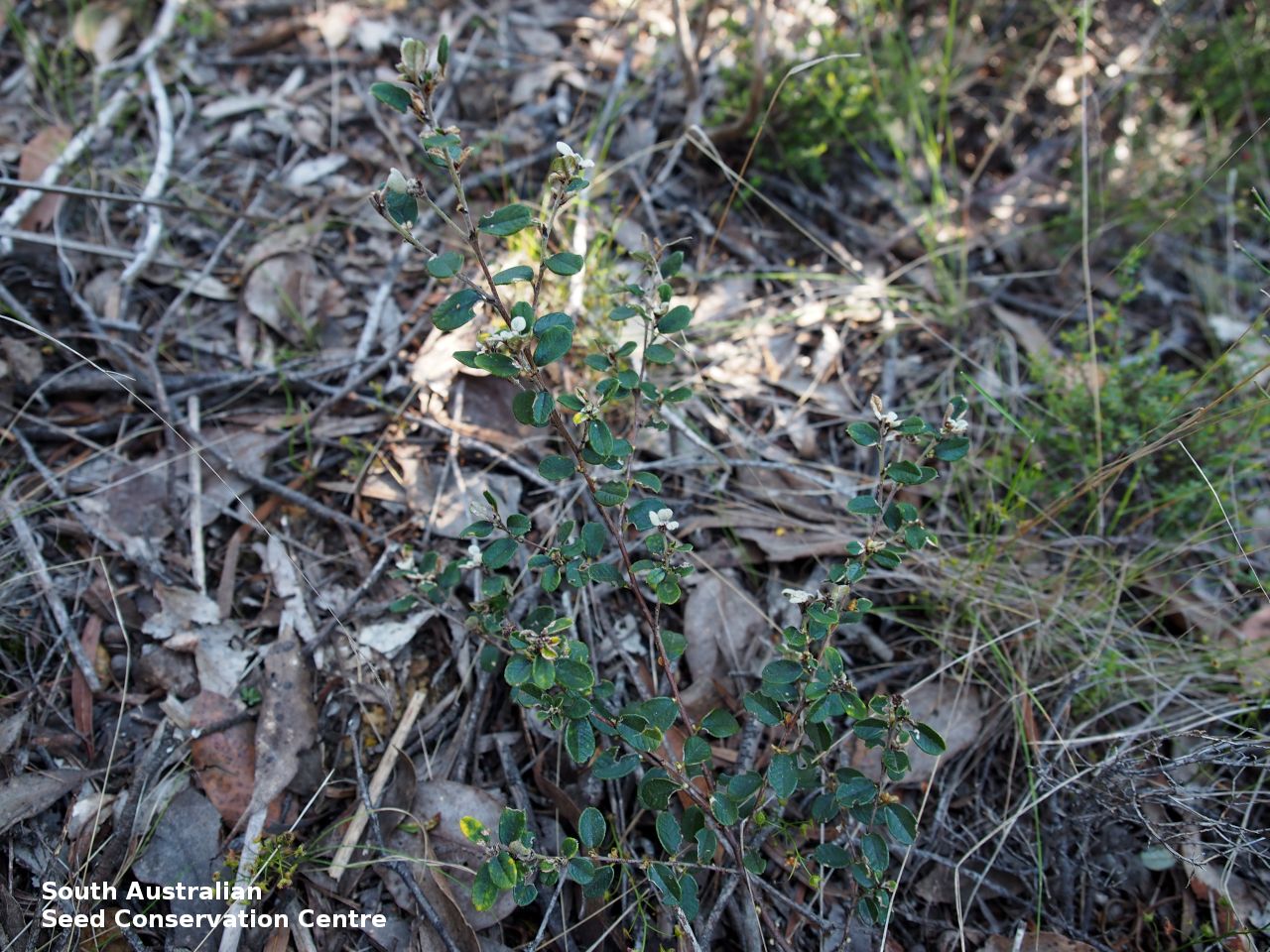
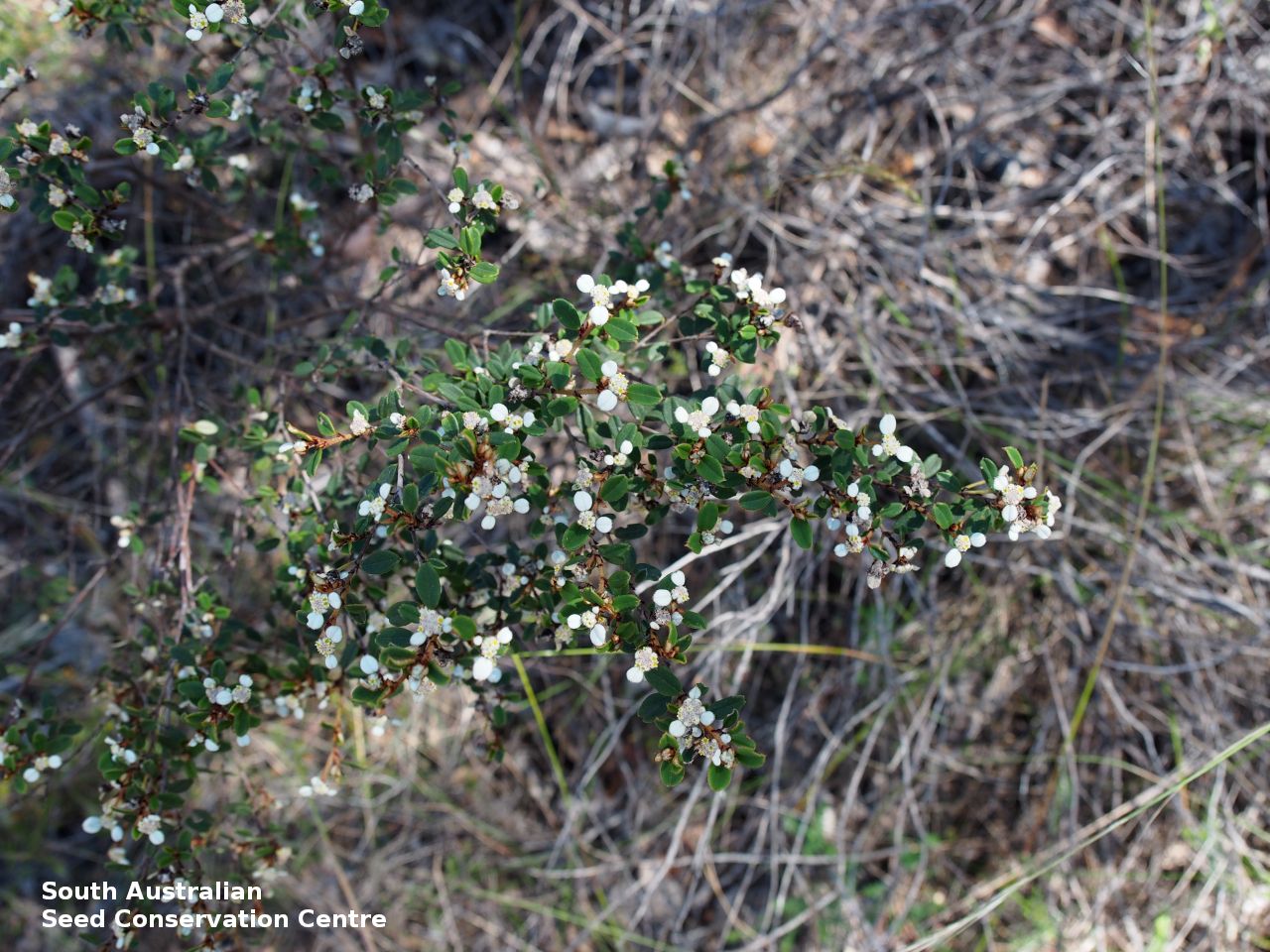
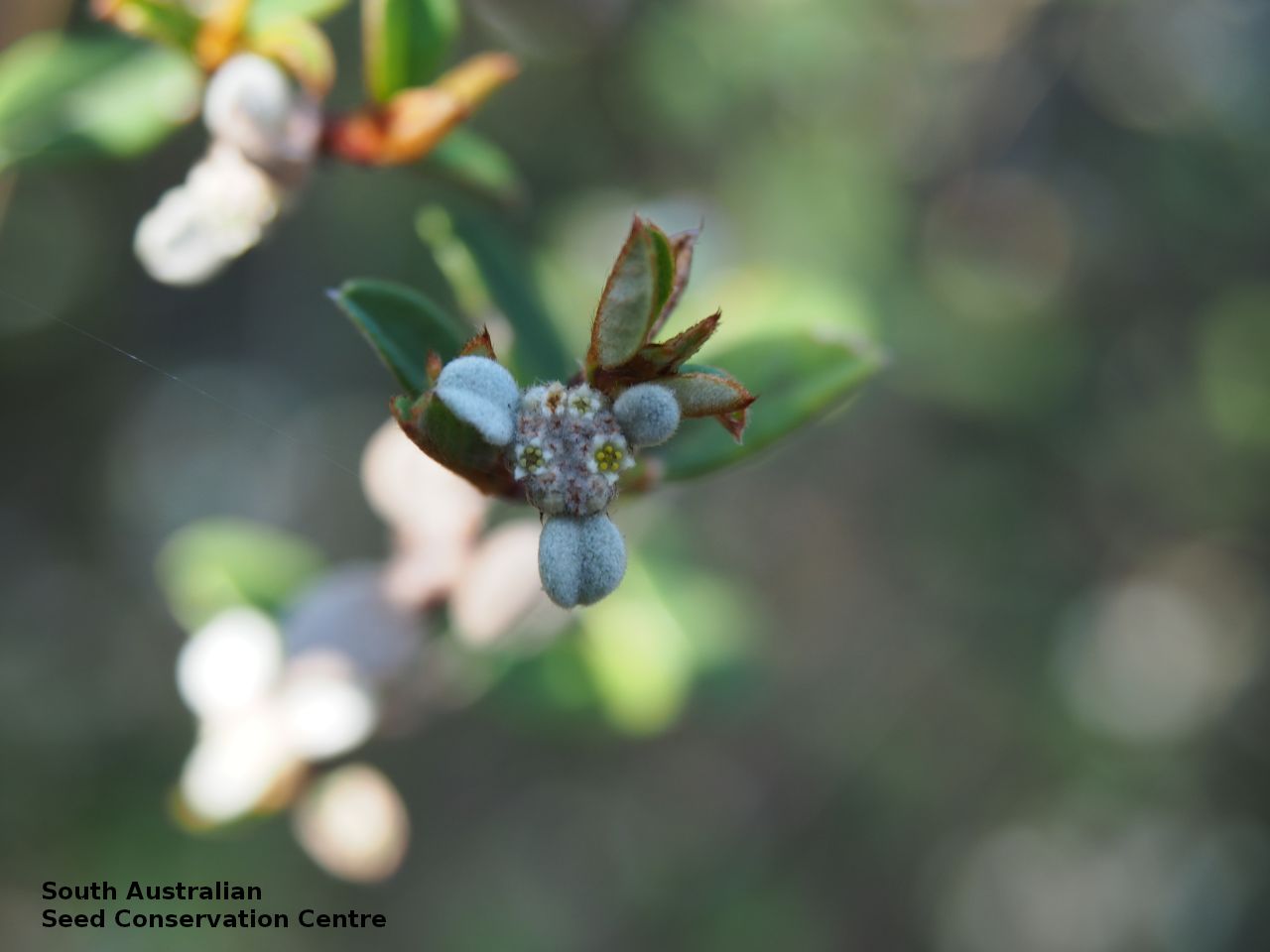
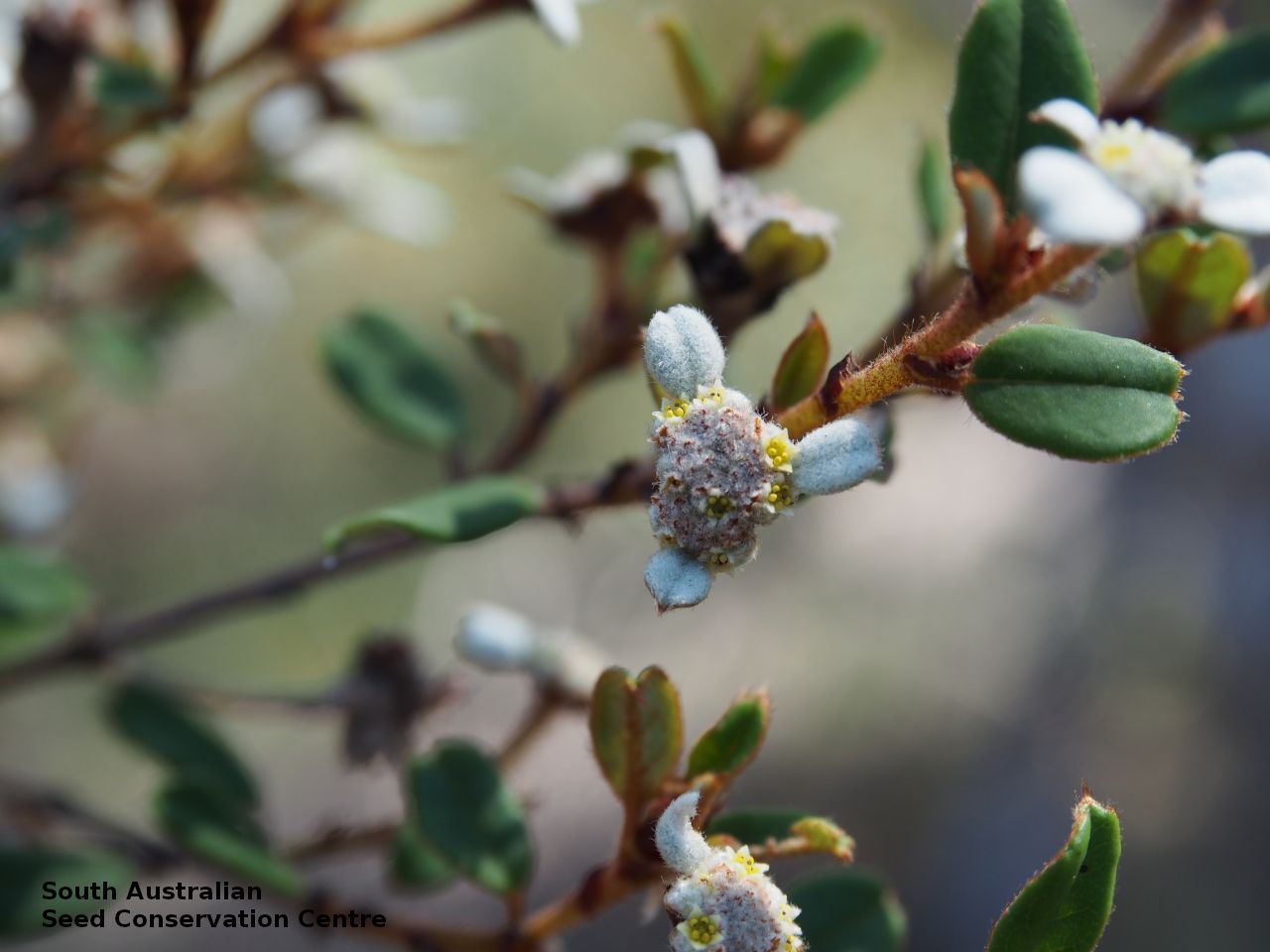
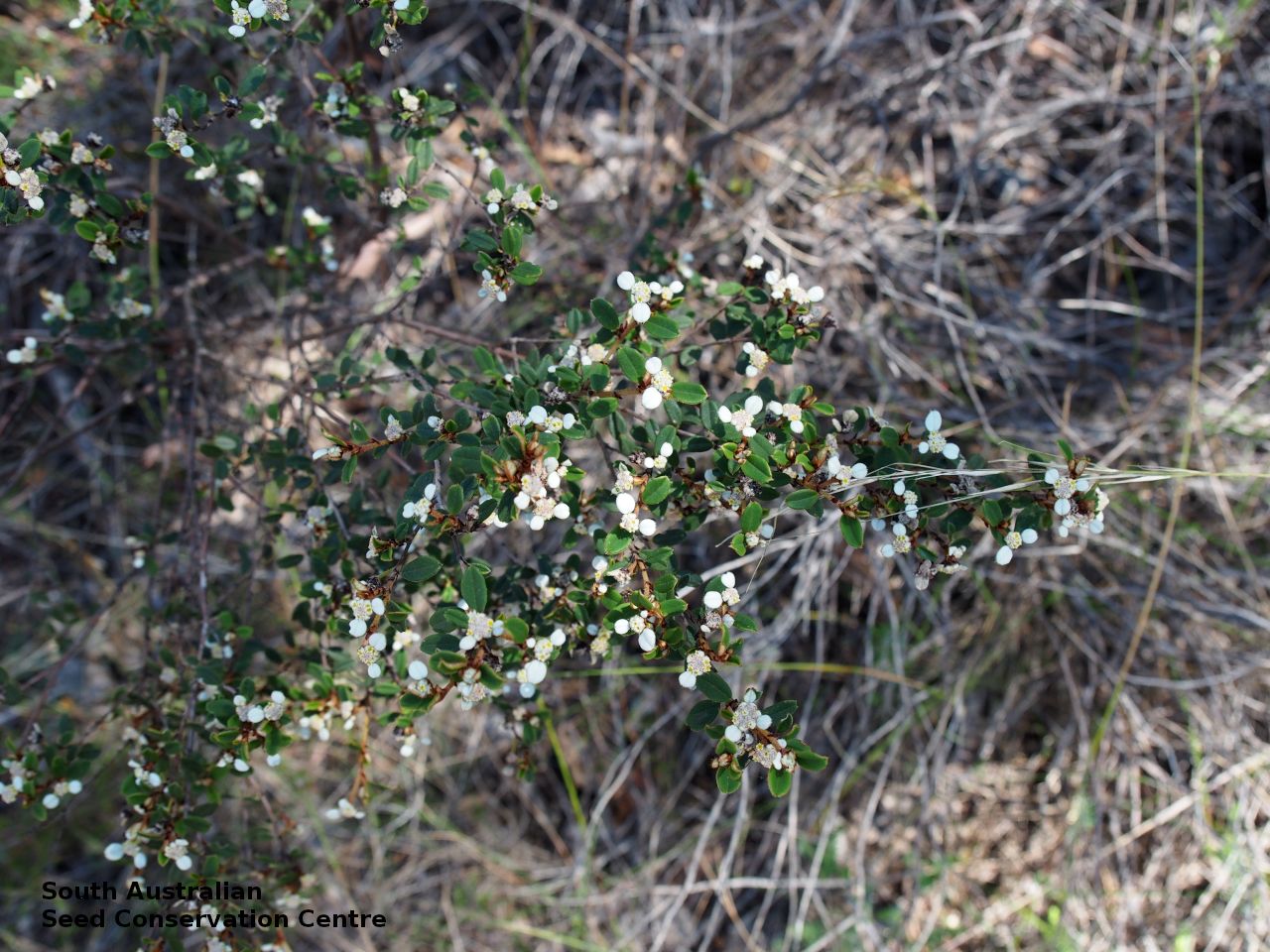
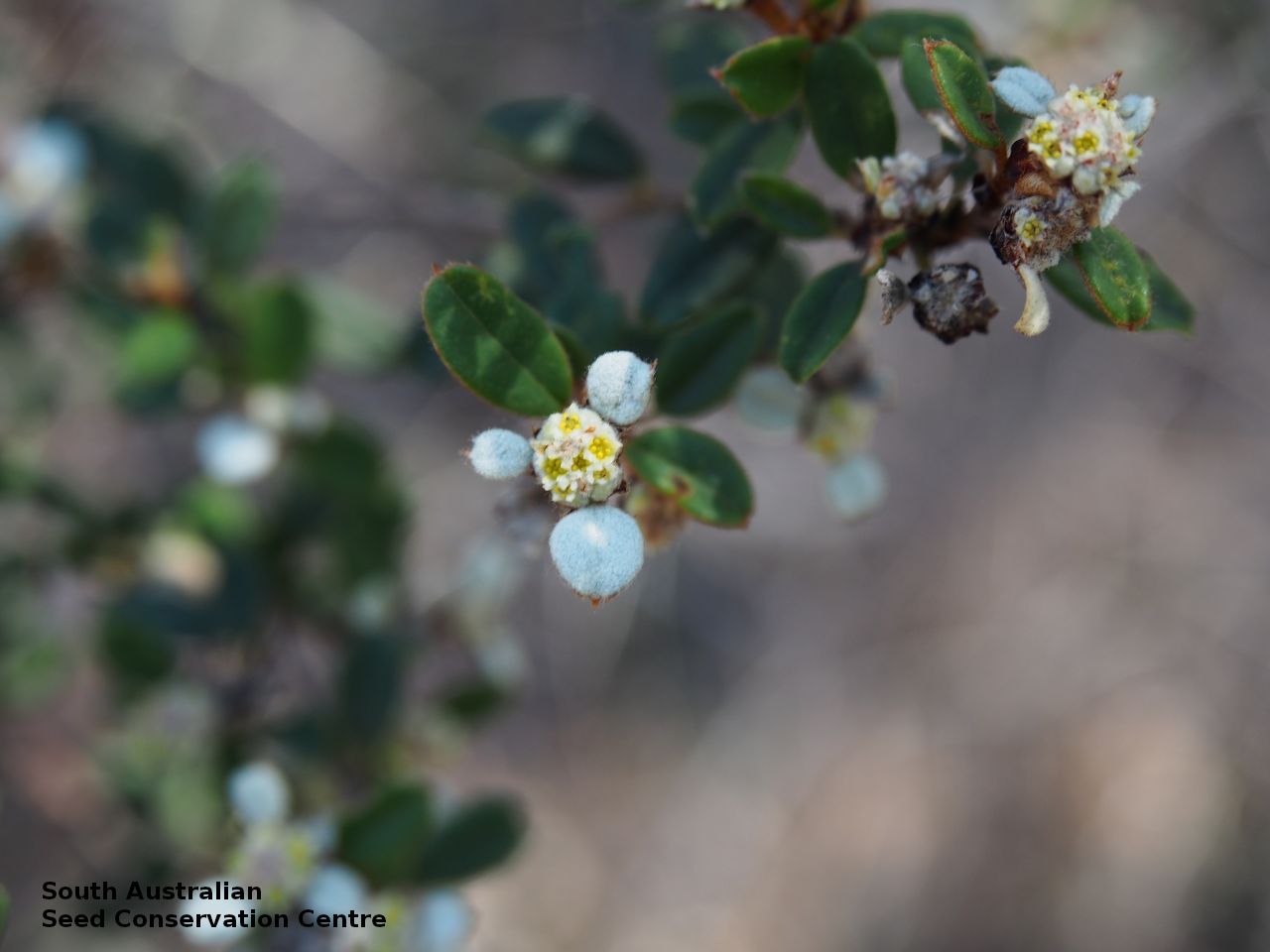

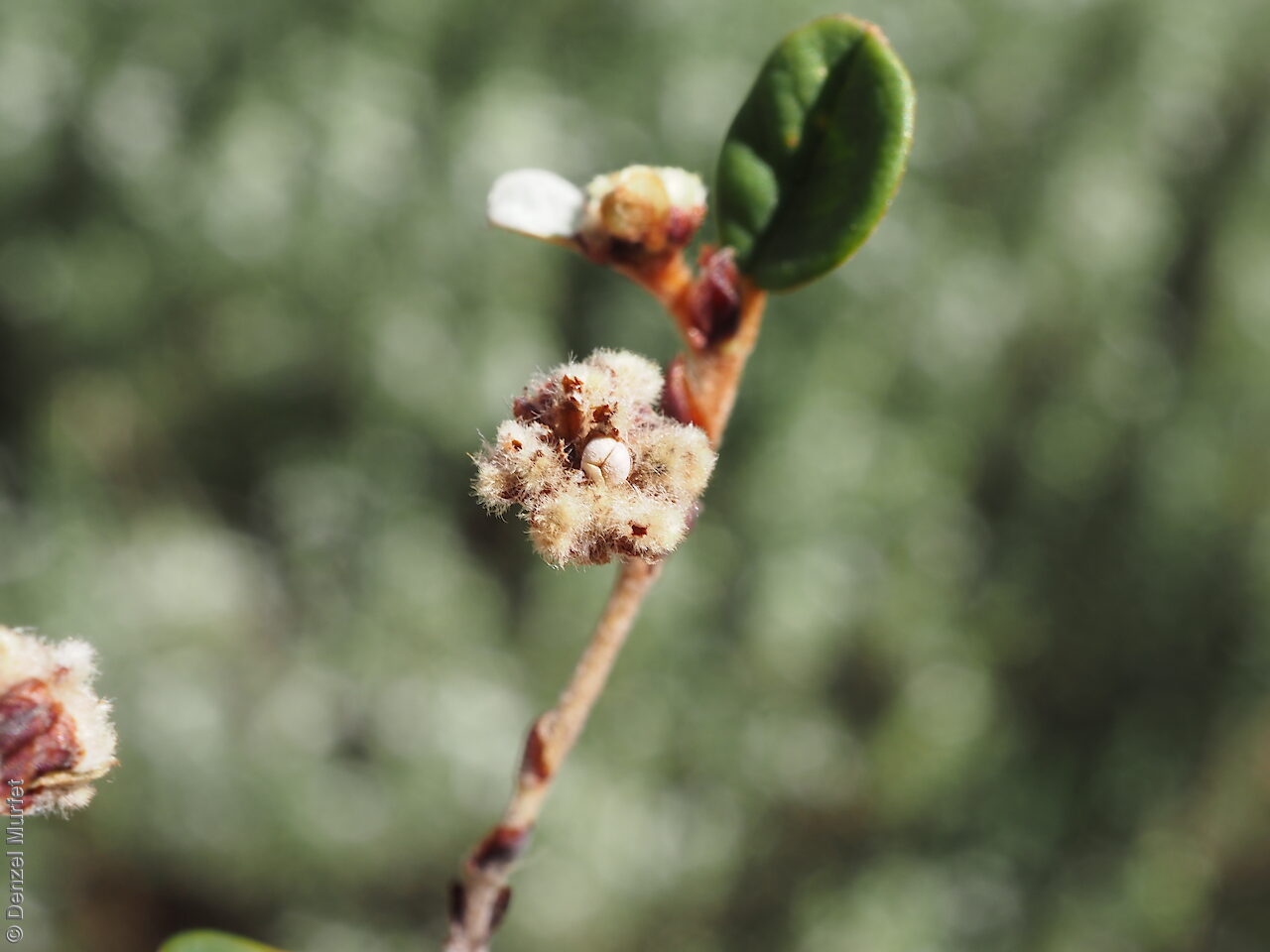
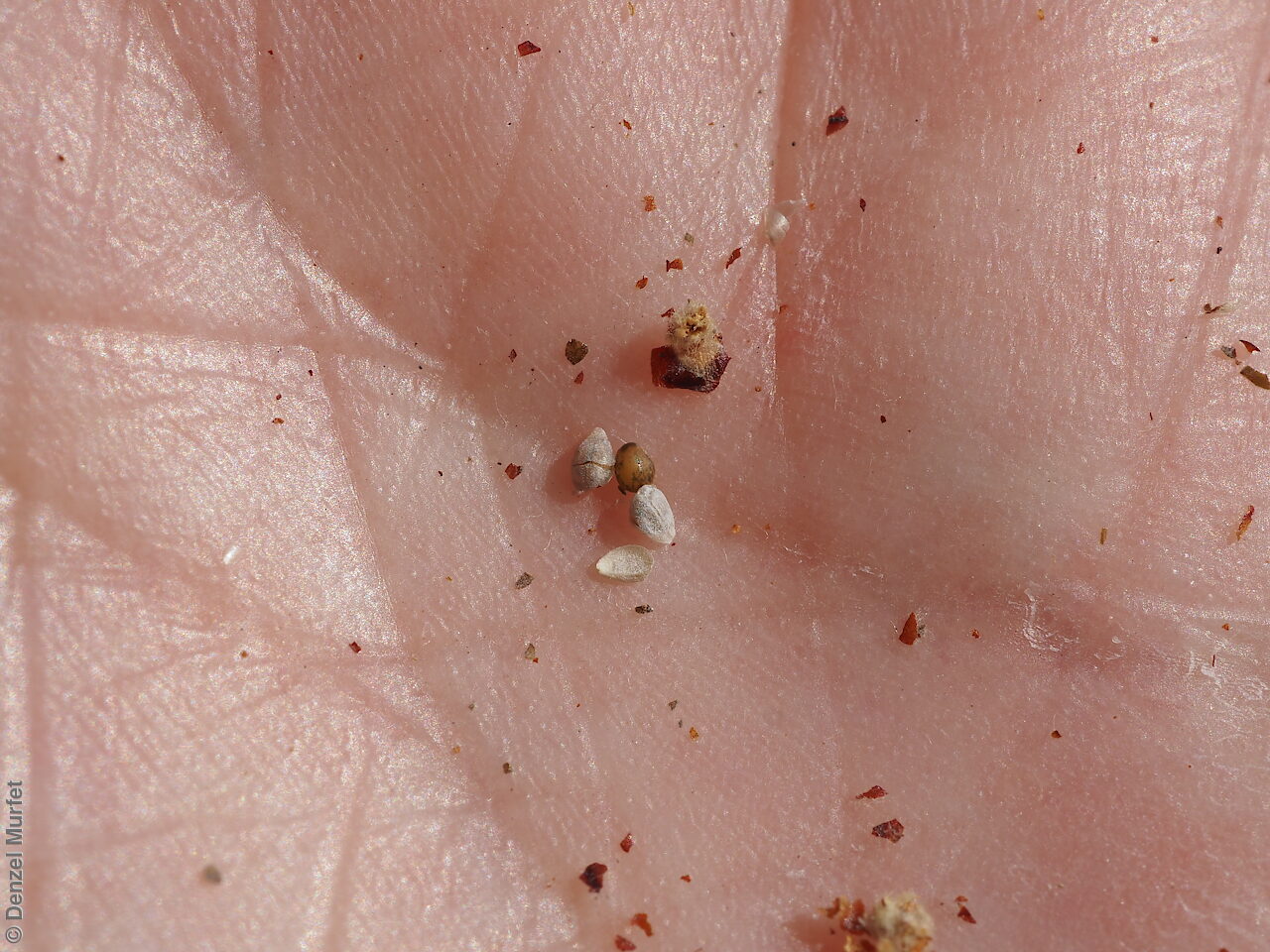
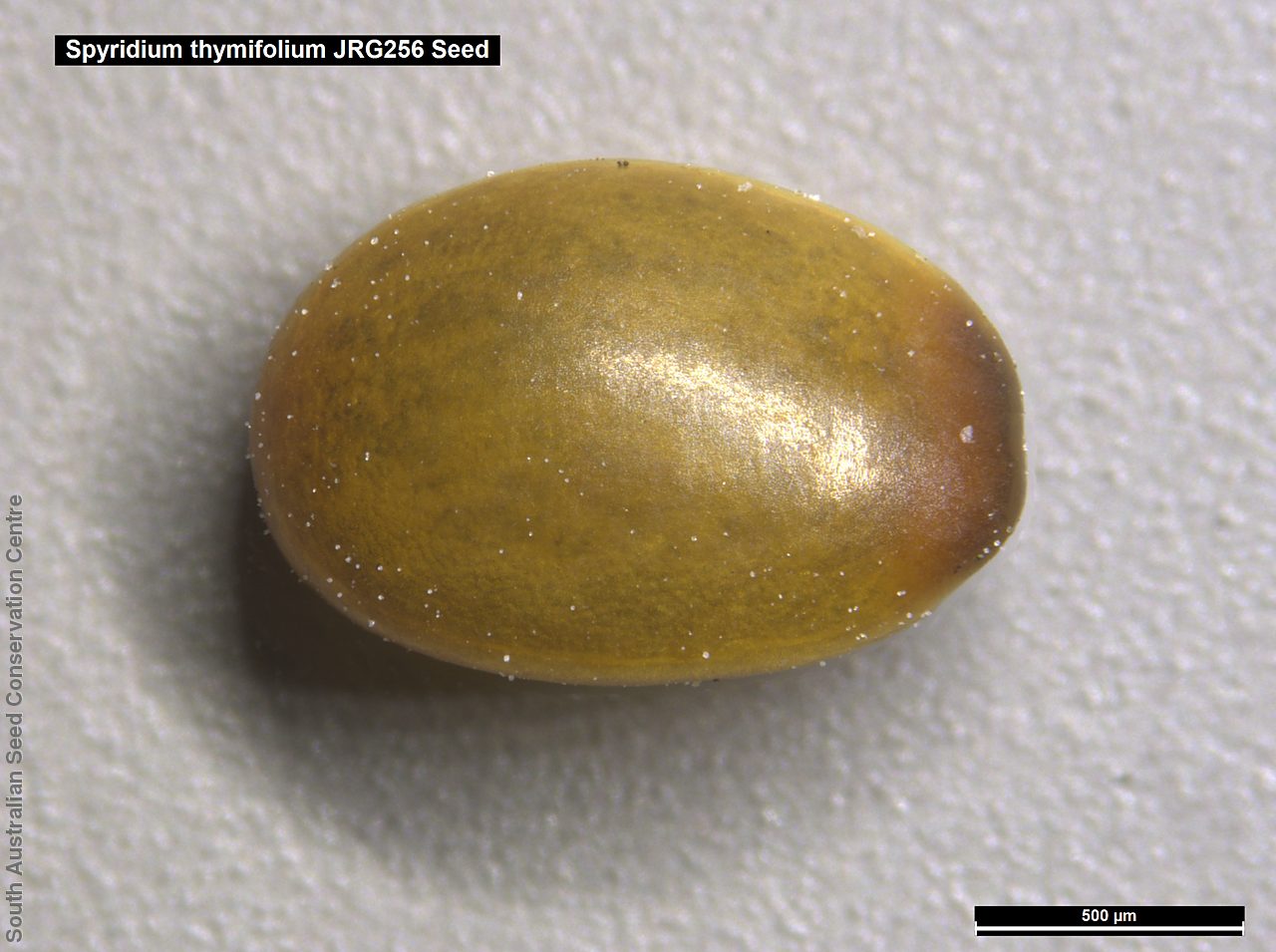
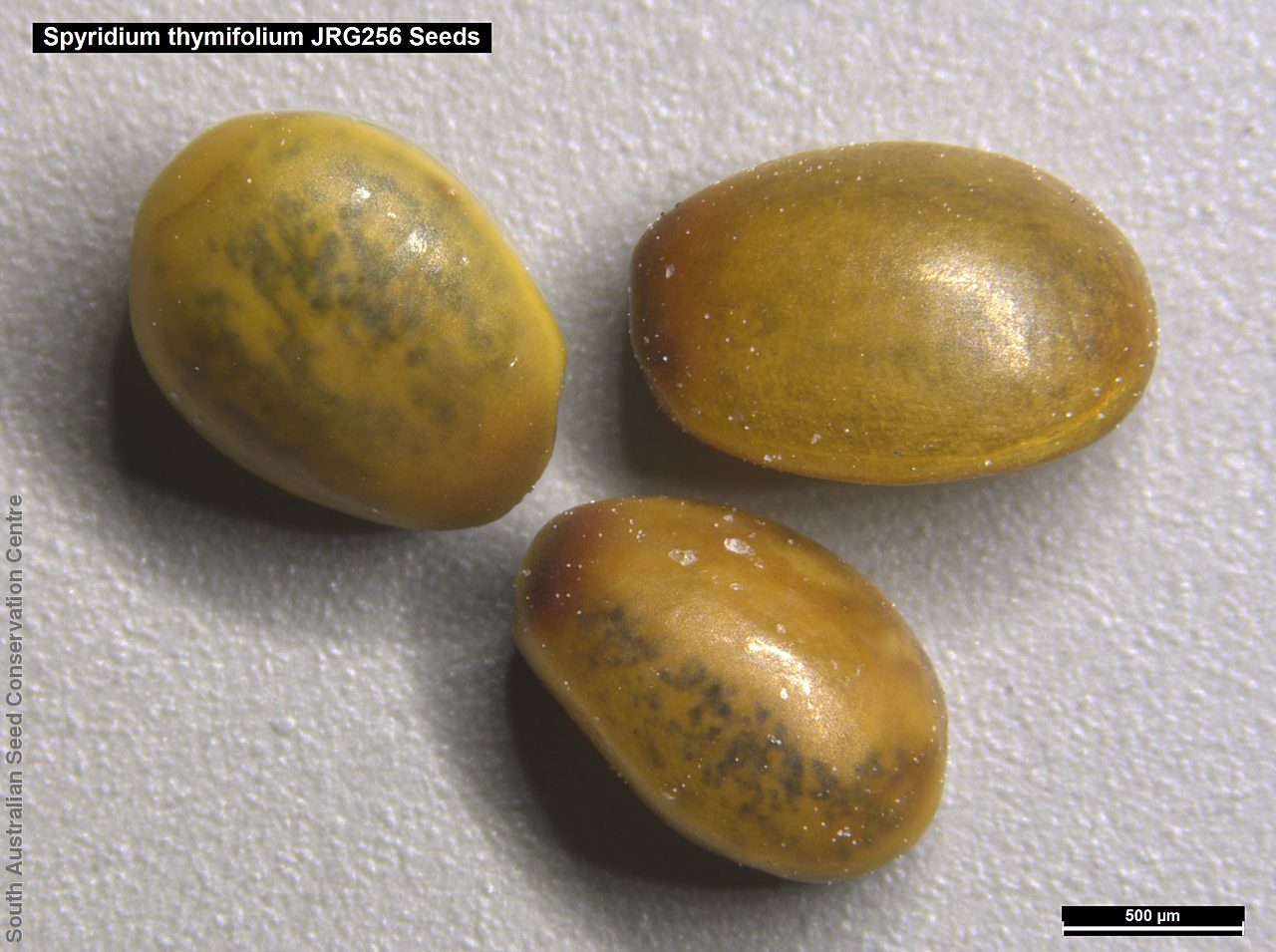
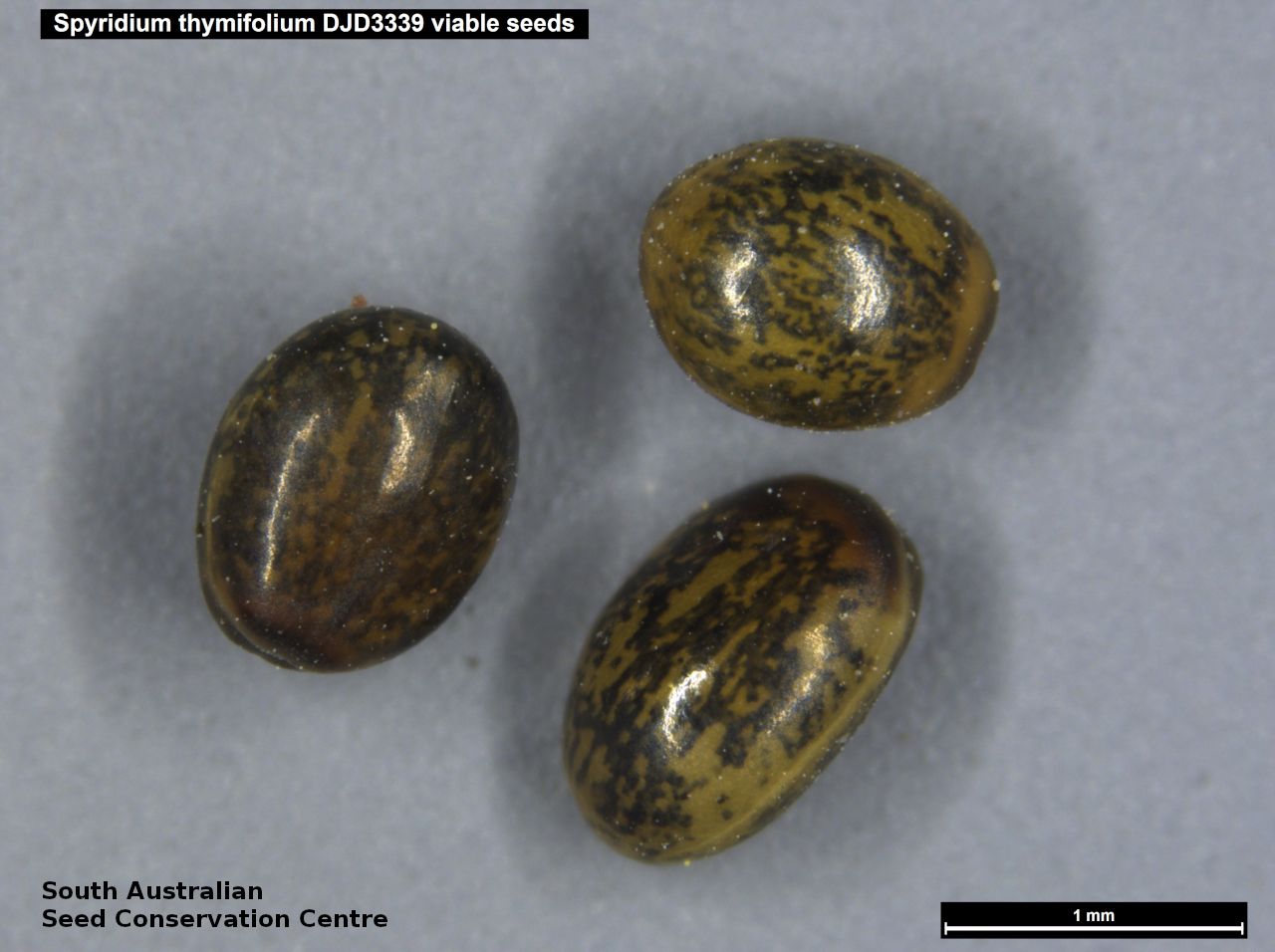
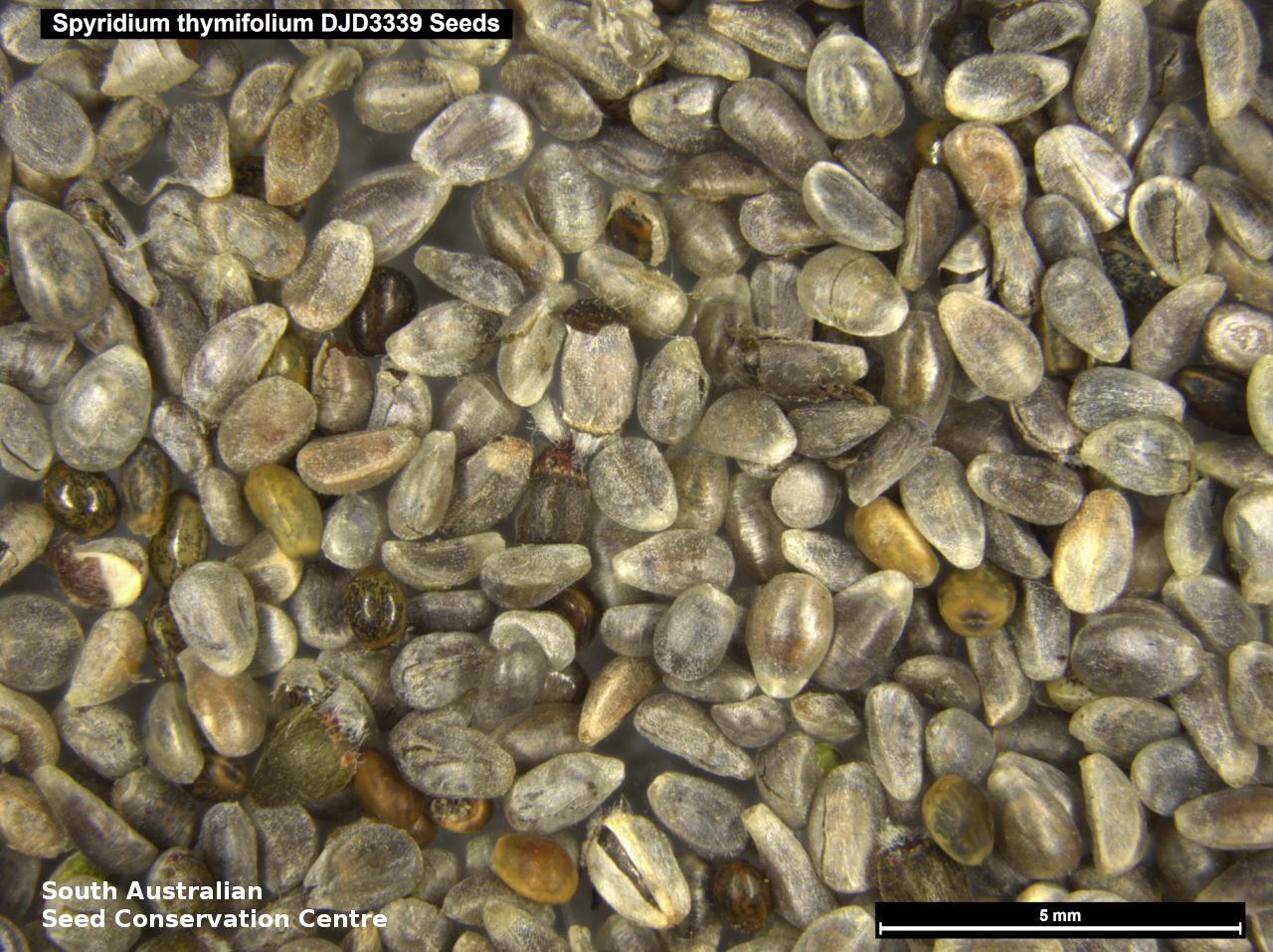
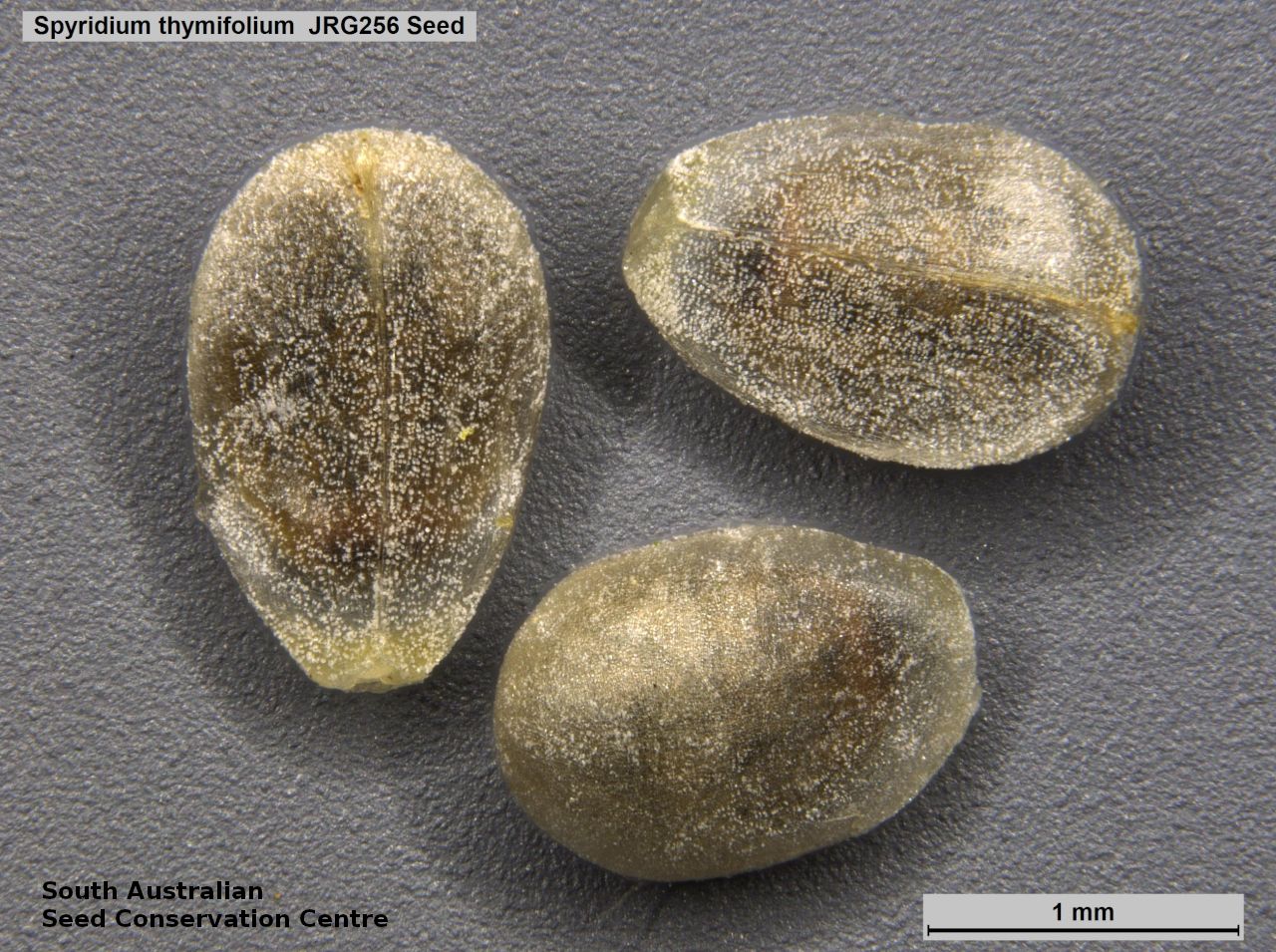
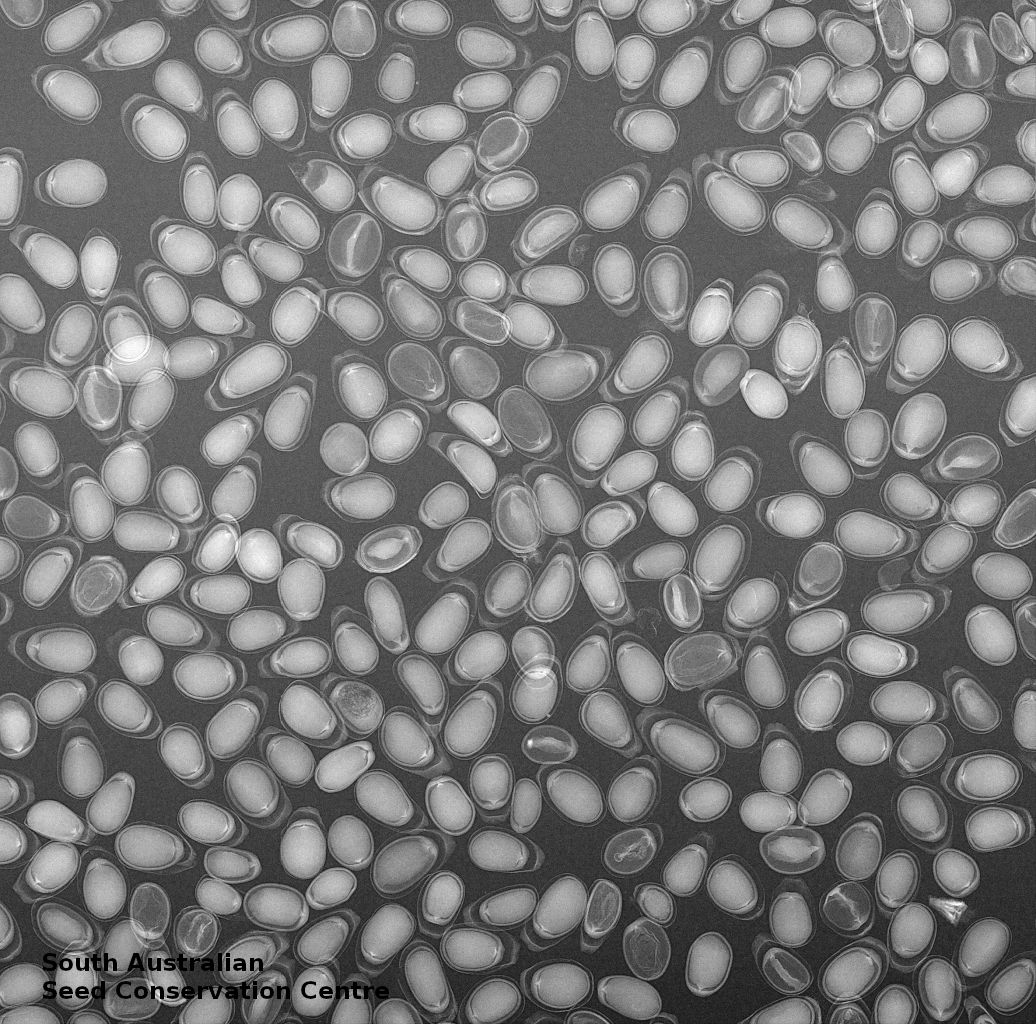
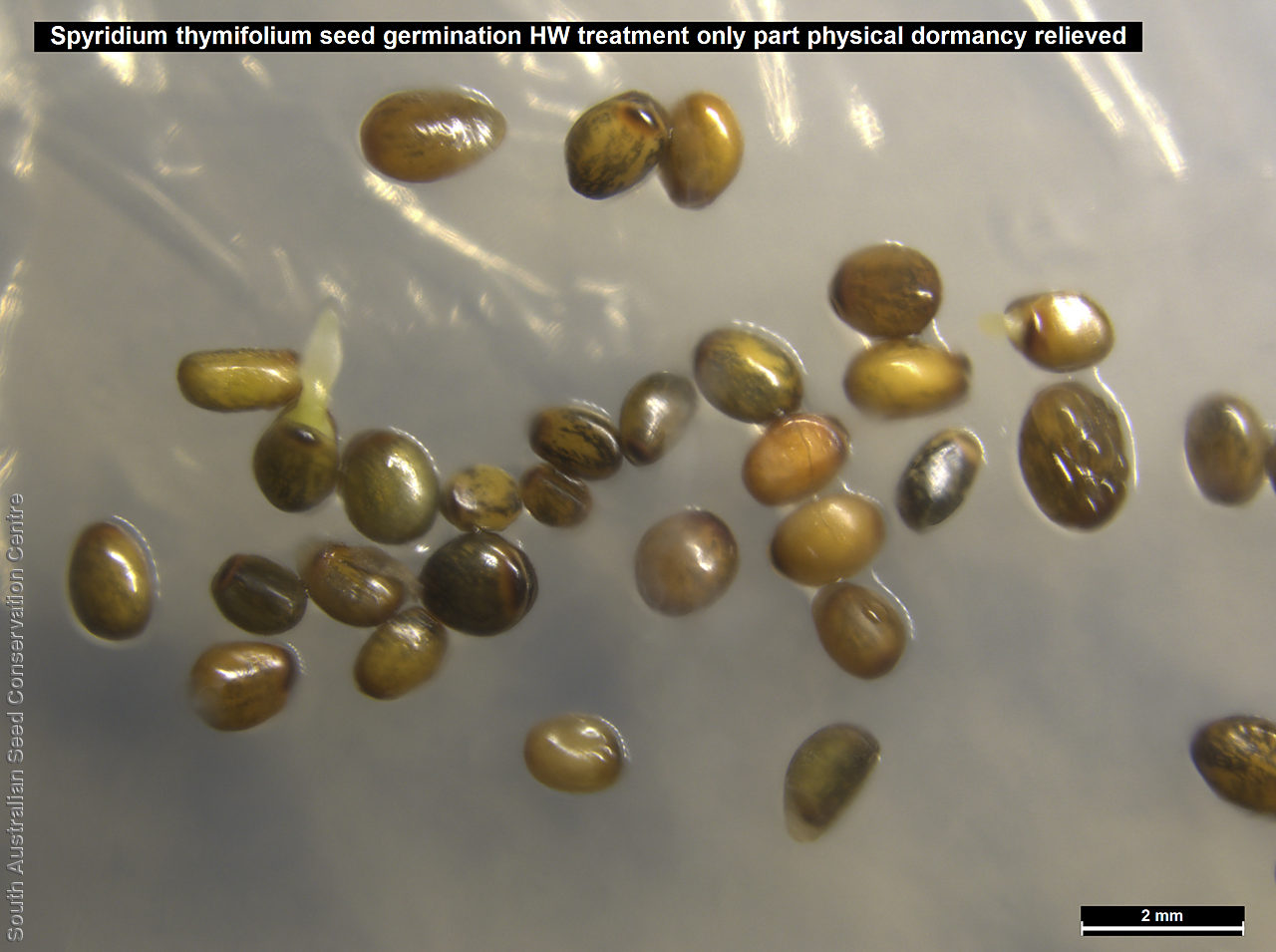
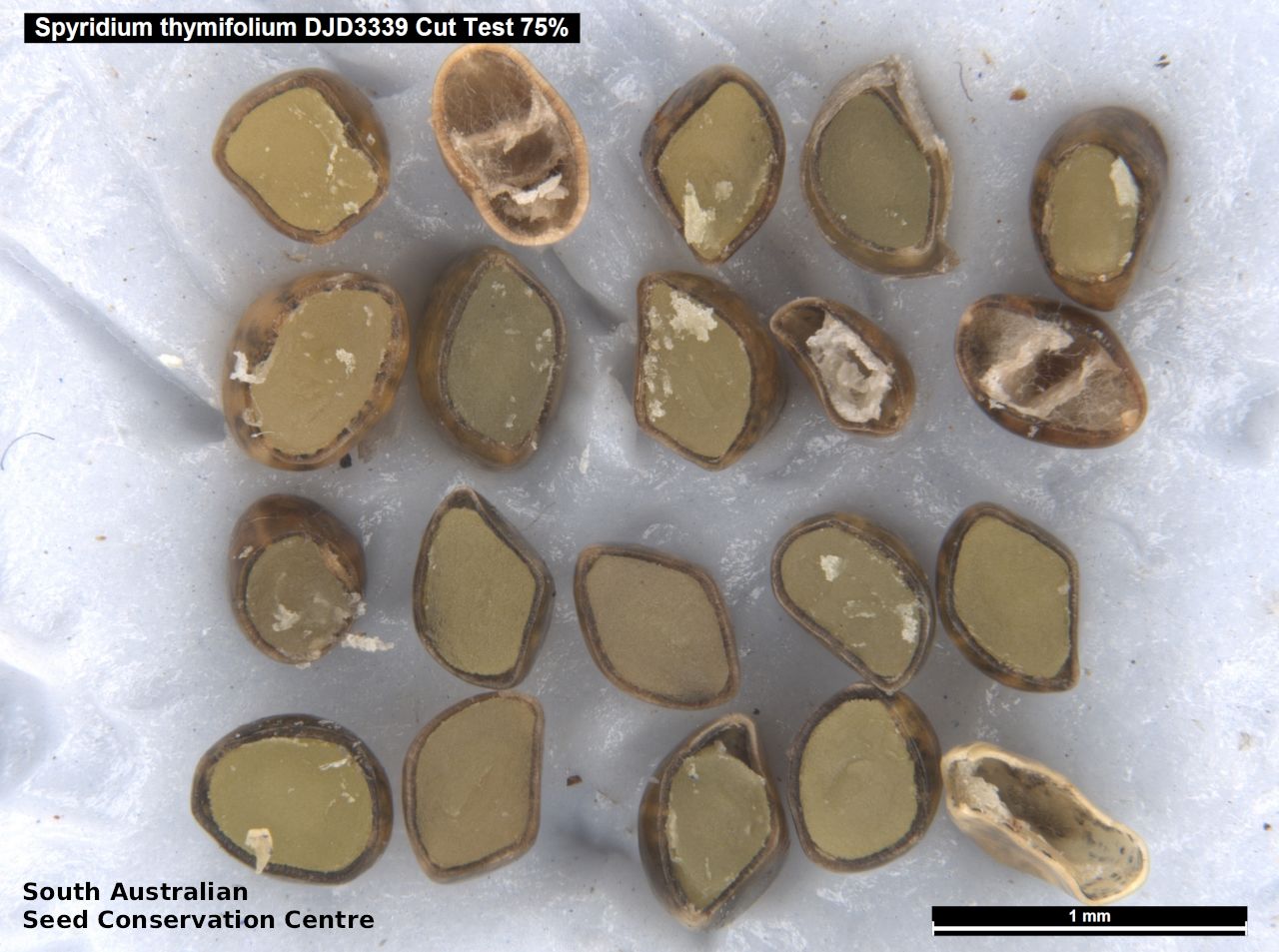
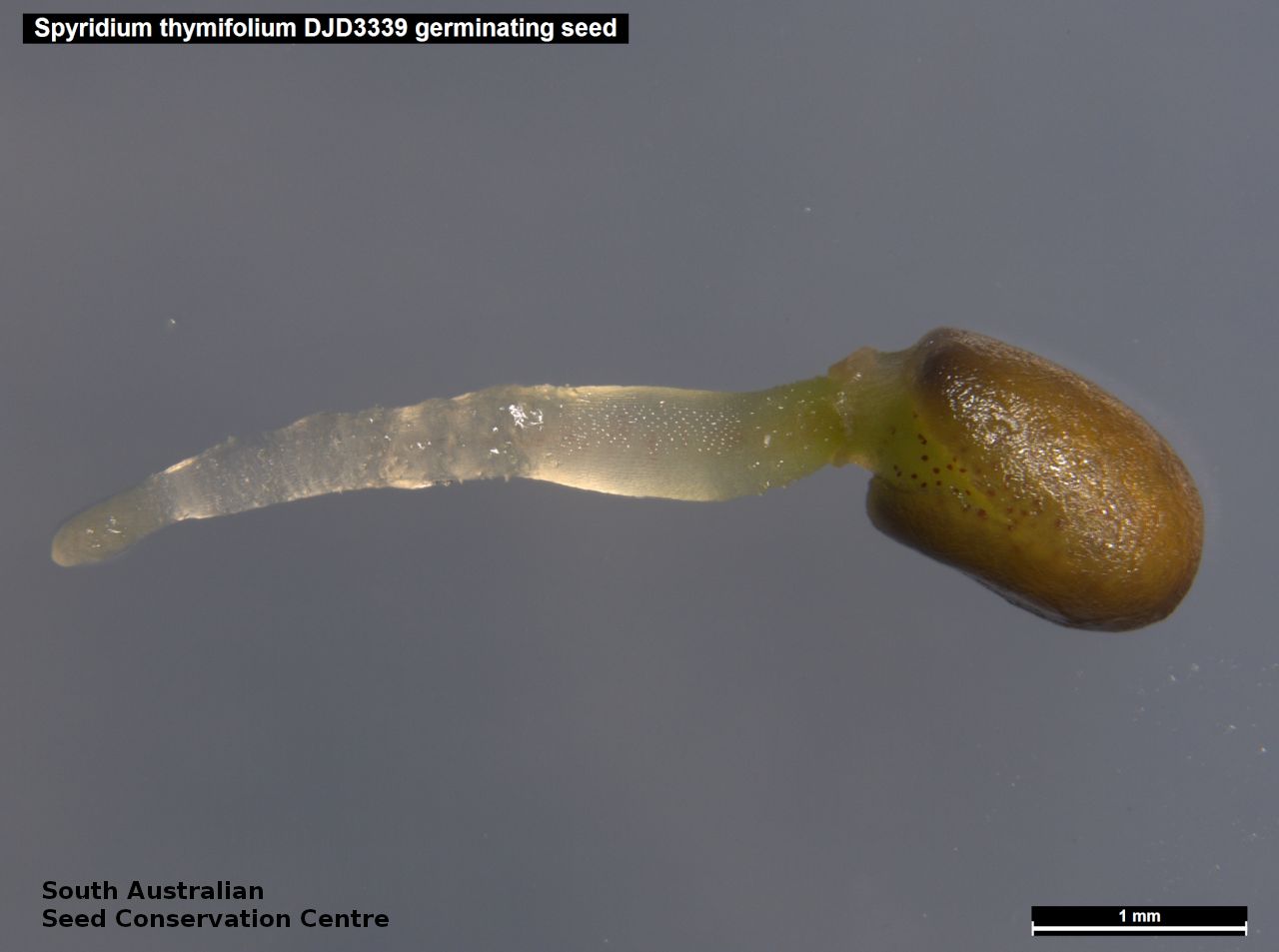
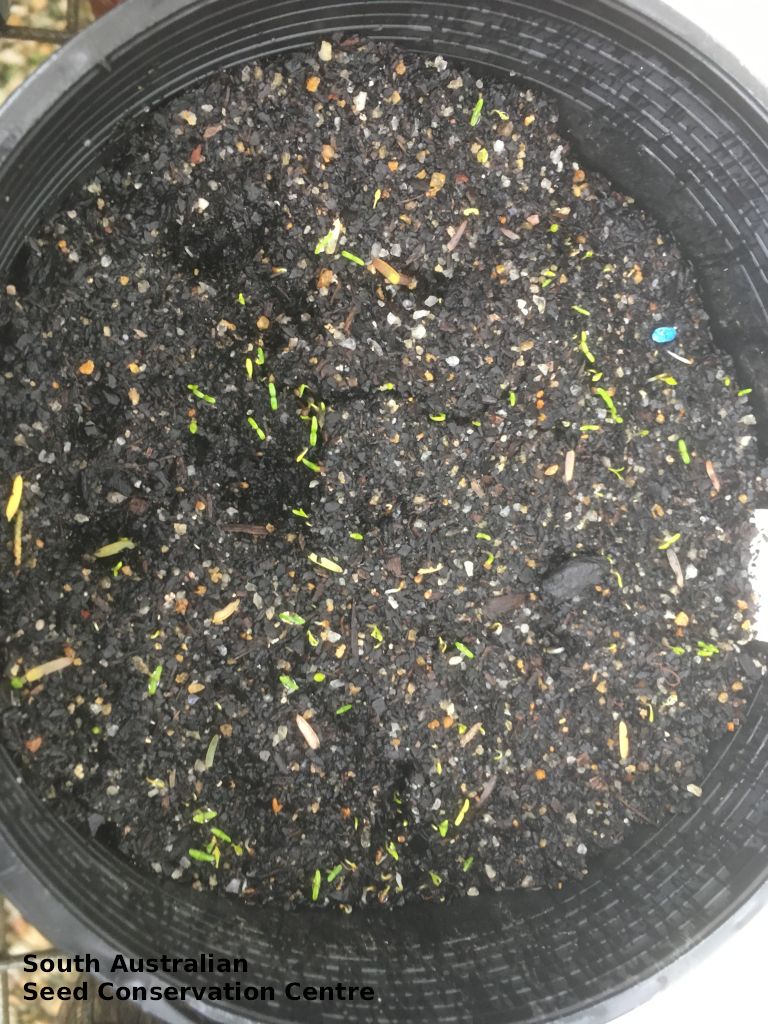
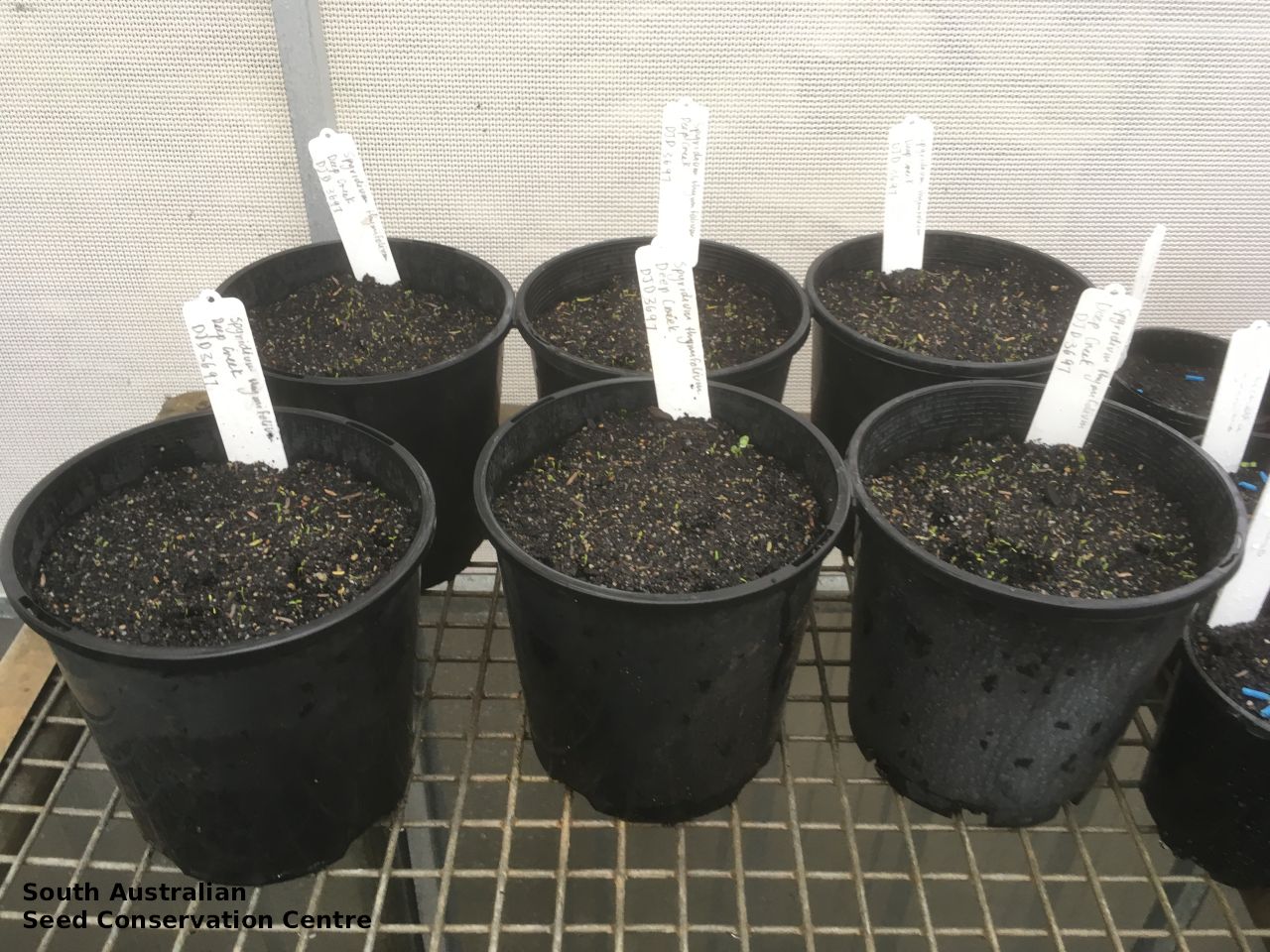
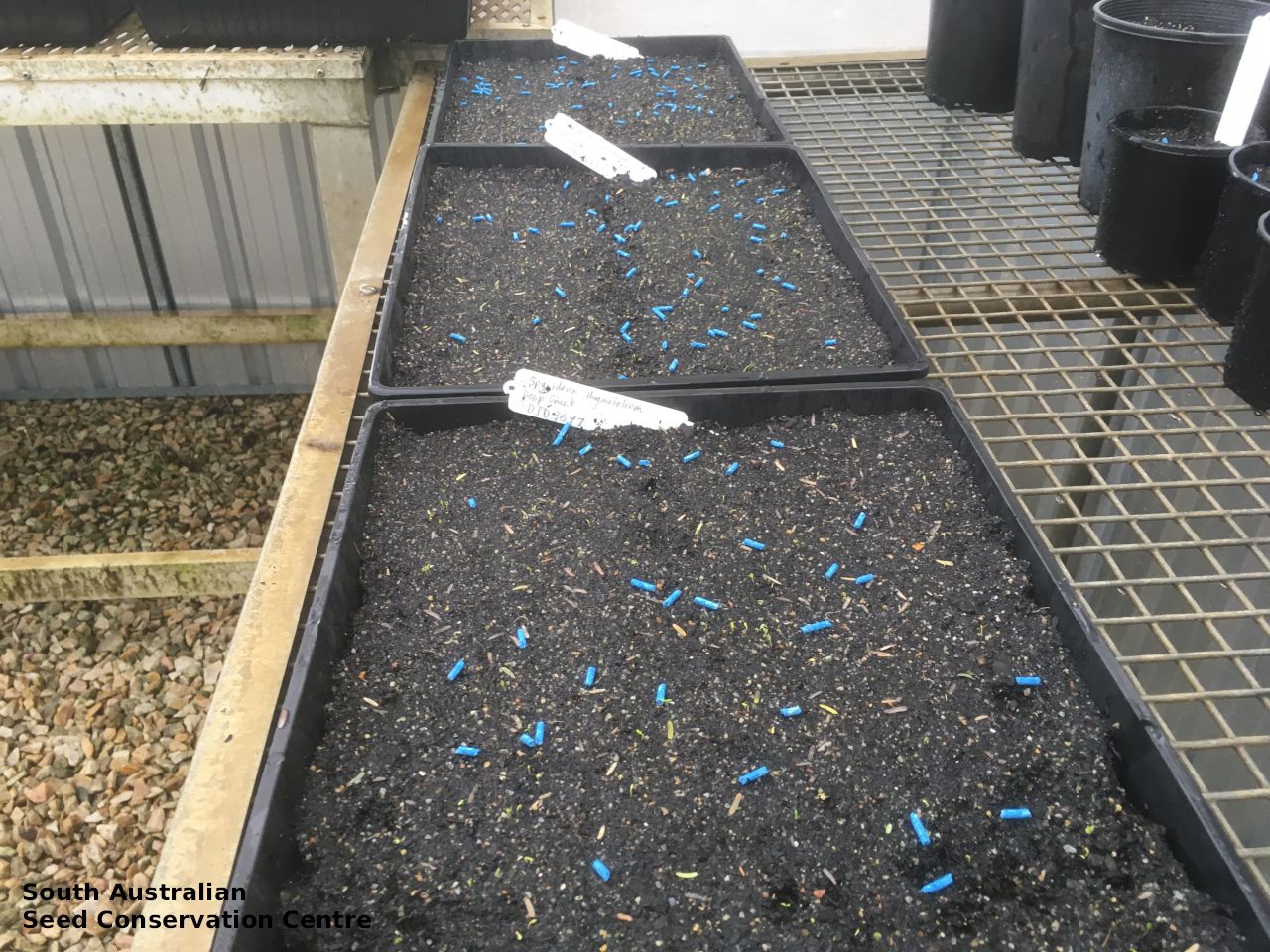


Botanical art
Prior names
Trymalium stuartii, nom.inval. pro syn.
Spyridium stuartii
Spyridium coactilifolium var. integrifolium
Cryptandra obovata
Etymology
Spyridium from the Greek word spyridion, meaning a small basket, and refers to the flower heads which are circled by leafy bracts; thymifolium refers to the thyme like leaves.
Distribution and status
Mainly found on the Fleurieu Peninsula and Kangaroo Island, endemic to South Australia. Native, common on the southern part of the Fleurieu Peninsula.
Herbarium regions: Yorke Peninsula, Southern Lofty, Kangaroo Island, South Eastern, Green Adelaide
NRM regions: Adelaide and Mount Lofty Ranges, Kangaroo Island, Northern and Yorke, South East
AVH map: SA distribution map (external link)
Plant description
Small shrub, to 50 cm high, slender branchlets white or rusty, leaves ovate to round, flat or somewhat concave above, upper surface glabrous, lower surface greyish-tomentose with prominent nerves; stipules brownish-black. Flowers September to February, compound heads, with 2 or 3 floral leaves, white-velvety above, capsule ovoid, almost glabrous. Fruits are membranous fruitlets. Seeds are smooth, ellipsoid seed approx 1 mm long, dark yellow/brown seed coat with dark green mottling. Seed embryo type is spatulate
Seed collection and propagation
Collect seeds between November and January. Collect ripe flower heads that have yellowed or brown bracts and mottled coloured seeds that can be easily rubbed out by hand. Leave to dry for 1 -2 weeks then gently rub seeds through a sieve. Separate unwanted material. Store the seeds with desiccant such as silica beads or dry rice in an air tight container in a cool place. From 3 collections viability ranged from 50 to 100%. Seeds have physical dormancy which can be broken by nicking the seed coat or covering seeds with boiling water and allowing to cool. Germination was highest in winter conditions. Seed collection and provision of seedlings for revegetation at Deep Creek were supported by ALMR NRM in 2017.
| Location | No. of seeds (weight grams) | Number of plants | Date collected | Collection number Collection location | Date stored | % Viability | Storage temperature |
|---|---|---|---|---|---|---|---|
| BGA | 1,000 (0.51 g) | 50+ | 12-Dec-2006 | DJD728 Kangaroo Island | 1-Aug-2007 | 85% | -18°C |
| MSB | 1,430 (0.37 g) | 50+ | 27-Dec-2015 | JRG256 Southern Lofty | 50% | ||
| BGA | 4,300 (2.17 g) | 50+ | 6-Dec-2016 | Deep Creek Southern Lofty | 1-Nov-2017 | 100% | -18°C |
| BGA | 5,700 (2.97 g) | 100 | 14-Nov-2019 | Deep Creek Southern Lofty | 24-Jun-2020 | 94% | -18°C |
| BGA | 2,500 (1.27 g) | 30+ | 3-Nov-2017 | JRG612 Southern Lofty | 24-Jun-2020 | 100% | -18°C |
| BGA | 31,000 (19.08 g) | 100+ | 30-Nov-2017 | DJD3697 Southern Lofty | 20-Jun-2023 | 100% | -18°C |
Number of plants: This is the number of plants from which the seeds were collected.
Collection location: The Herbarium of South Australia's region name.
% Viability: Percentage of filled healthy seeds determined by a cut test or x-ray.